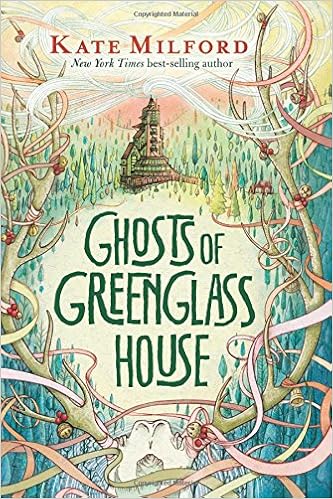 Three chapters in, I thought this book was such a bore. But now that I've finished it, I'm looking forward to reading the sequel that came out just a couple months ago (The Vanderbeekers and the Hidden Garden). What changed? Instead of being impatient with a slow plot, I became so engaged with the characters that I was more interested in their own development and emotions than in the resolution of the central question--which is: Will they have to move? And where?
Three chapters in, I thought this book was such a bore. But now that I've finished it, I'm looking forward to reading the sequel that came out just a couple months ago (The Vanderbeekers and the Hidden Garden). What changed? Instead of being impatient with a slow plot, I became so engaged with the characters that I was more interested in their own development and emotions than in the resolution of the central question--which is: Will they have to move? And where?
While I love a good fantasy book full of imagination and magic and creative settings, every once in a while I need to sit down with a real-life story about normal people with normal problems. The Vanderbeekers of 141st Street is just such a book, and ideal for an early grade school audience.
This book is appealing to me largely because it's clearly an homage to all lovely homes in the world. This family has made their home in Harlem in Manhattan, which is hard for me to relate to. But there's no doubt that the picture that Karina Yan Glaser paints is very attractive. The Vanderbeekers are an in-tact family of seven (living in Manhattan... which perhaps requires a bit of suspension of disbelief right up front): father, mother, and five kids (plus dog and bunny!). Mr. Vanderbeeker grew up in this particular neighborhood in Harlem, as did all of his kids up to their current ages, and even in this particular house for the last 6 years or so. The Vanderbeekers know everyone in the neighborhood and help take care of the elderly and thoughtfully include those around them in their lives. It's a beautiful picture of the way all people are meant to live in community. A personal favorite moment is a snapshot of how comfortable the family is with all different sorts of people when a "gentleman" in baggy pants with a rhinestone studded dog leash out walking his chihuahua who, upon seeing a contingent of the kids, greets them with, "What-up, Vanderbeekers?" (Even though I would not normally think "gentleman" when seeing a person of this description, I love that he is labeled such in the book, showing that the children see him that way and have a way of treating all grownups as "ladies" and "gentlemen" no matter what stereotype they might fit into.)
Of course, the family is a bit loud. How can you not be loud when there are 5 kids in one family? In fact, their noise and conspicuous presence is part of what causes their landlord to decide not to renew their lease. So the kids develop a hair-brained (and ill-fated) scheme to capture the heart of the evil Beiderman so he will change his mind and let them stay. The plan includes everything from offerings of homemade place-mats, a kitten, threats a la Treasure Island, and a neighborhood petition to show how Harlem would not be the same if the Vanderbeekers had to move.
The story is simple and fairly slowly developed. The whole book takes place over about 4 days surrounding Christmas. But each child, and both parents are fondly sketched--each their own delights and sorrows and dreams and memories. They are altogether charming. This book does much to affirm the goodness of a family, both for the members of that family and also for the good of the community that surrounds the family.
